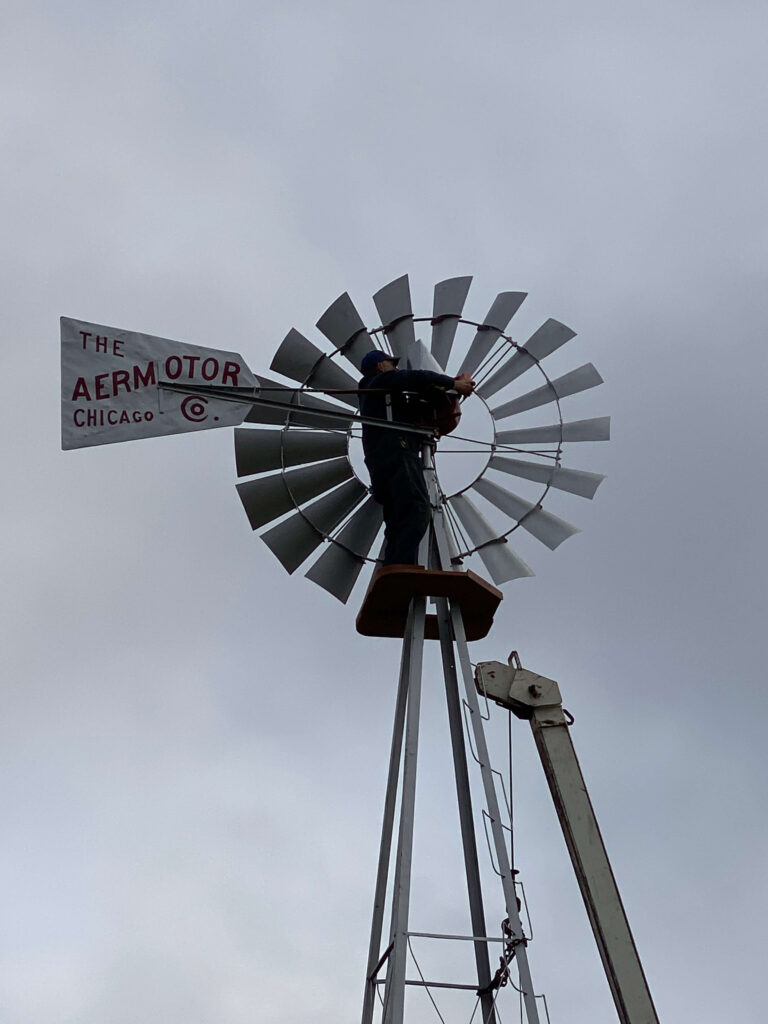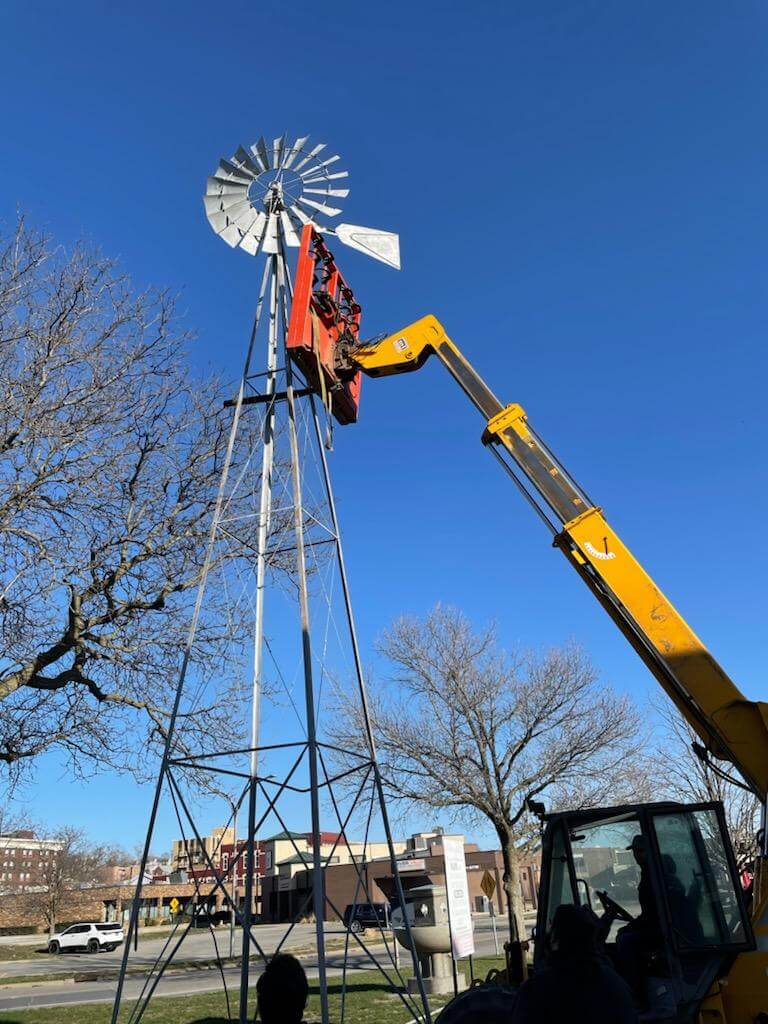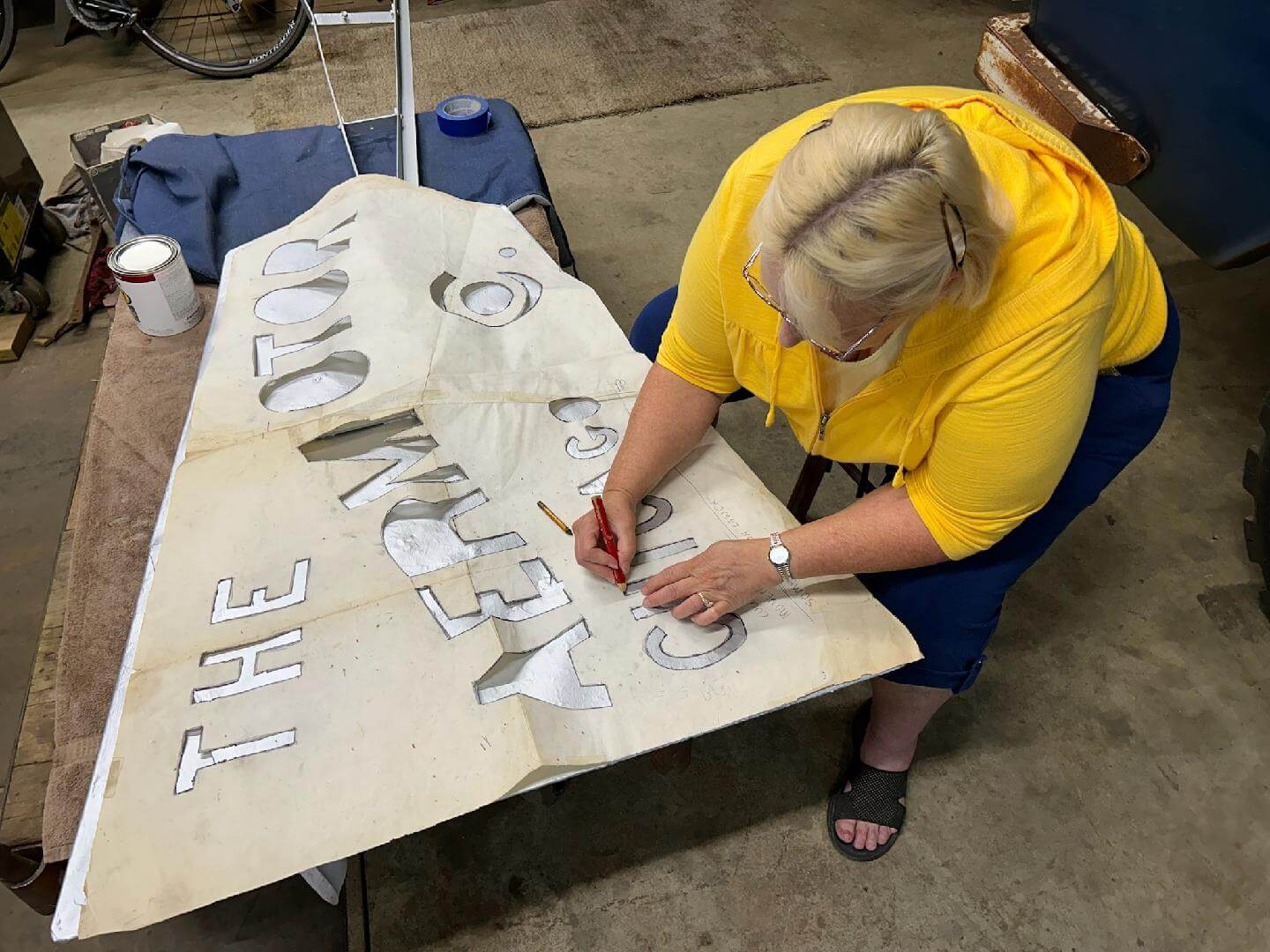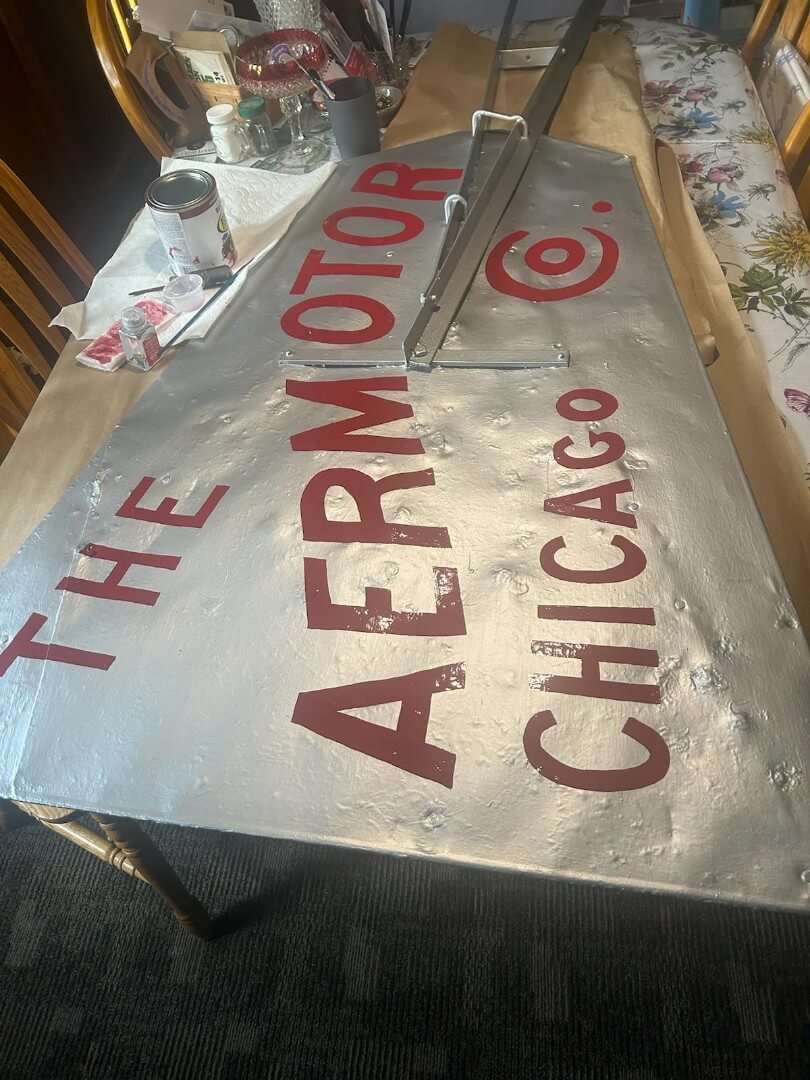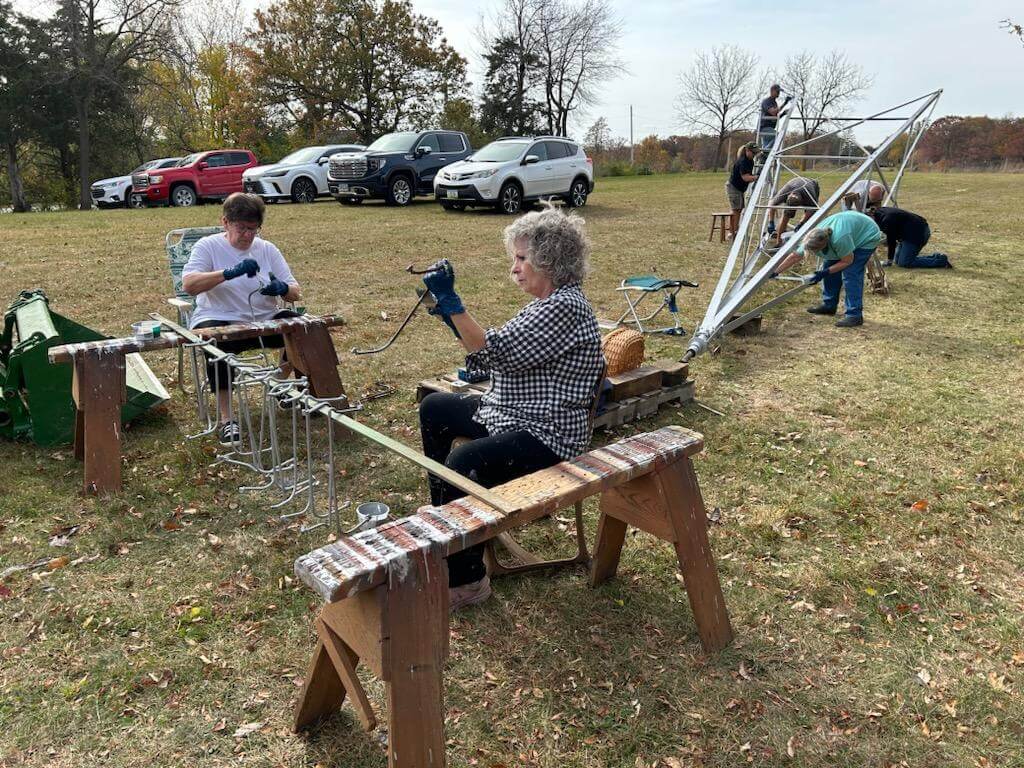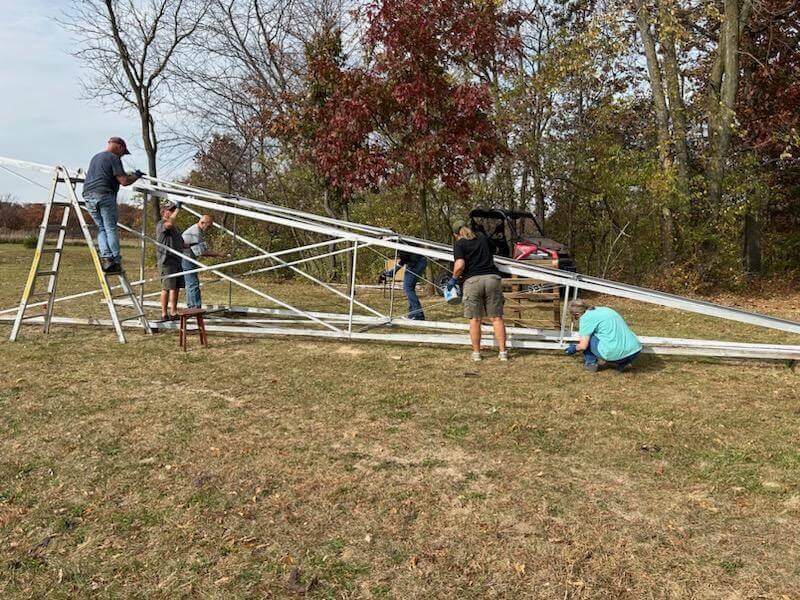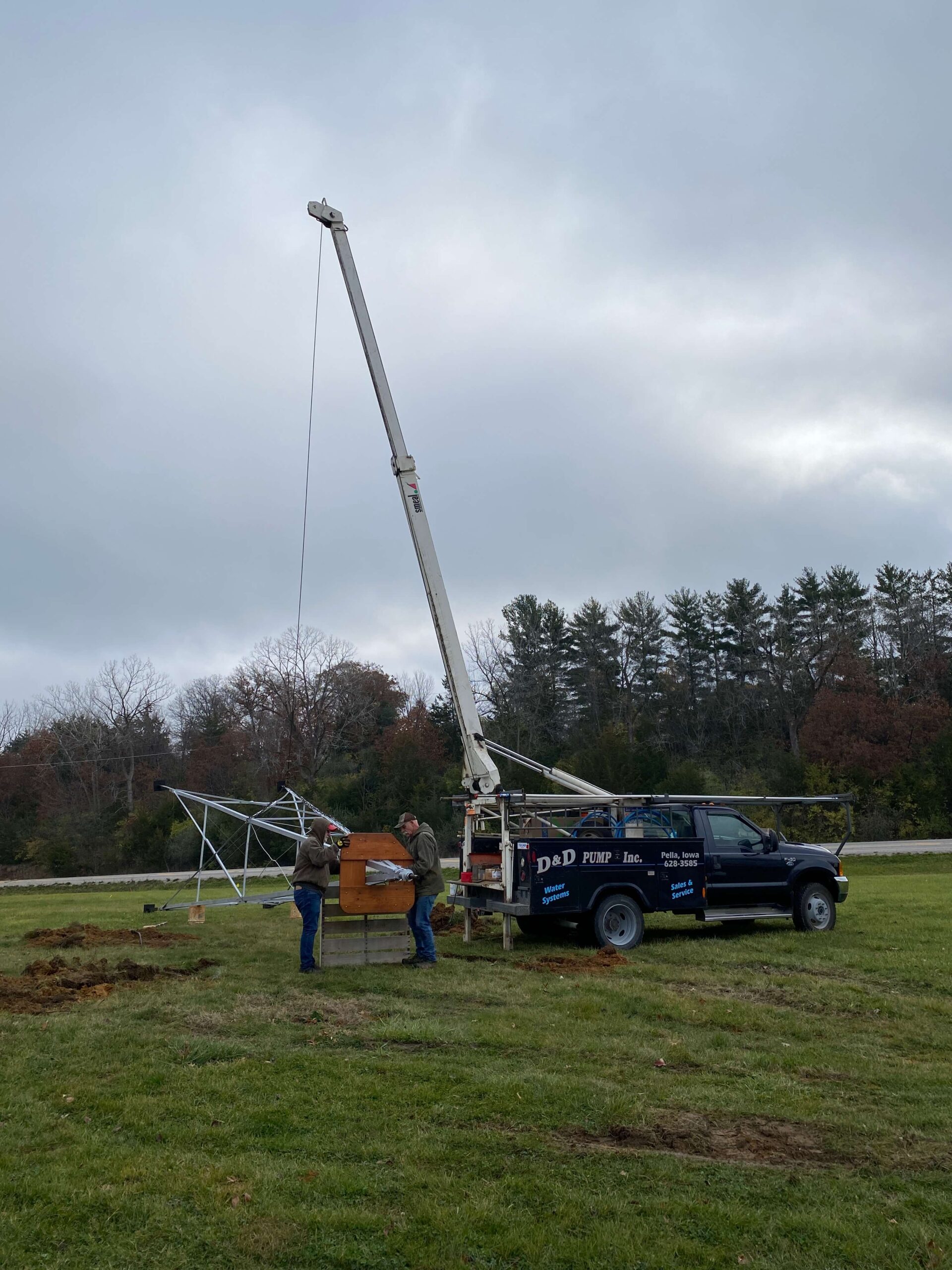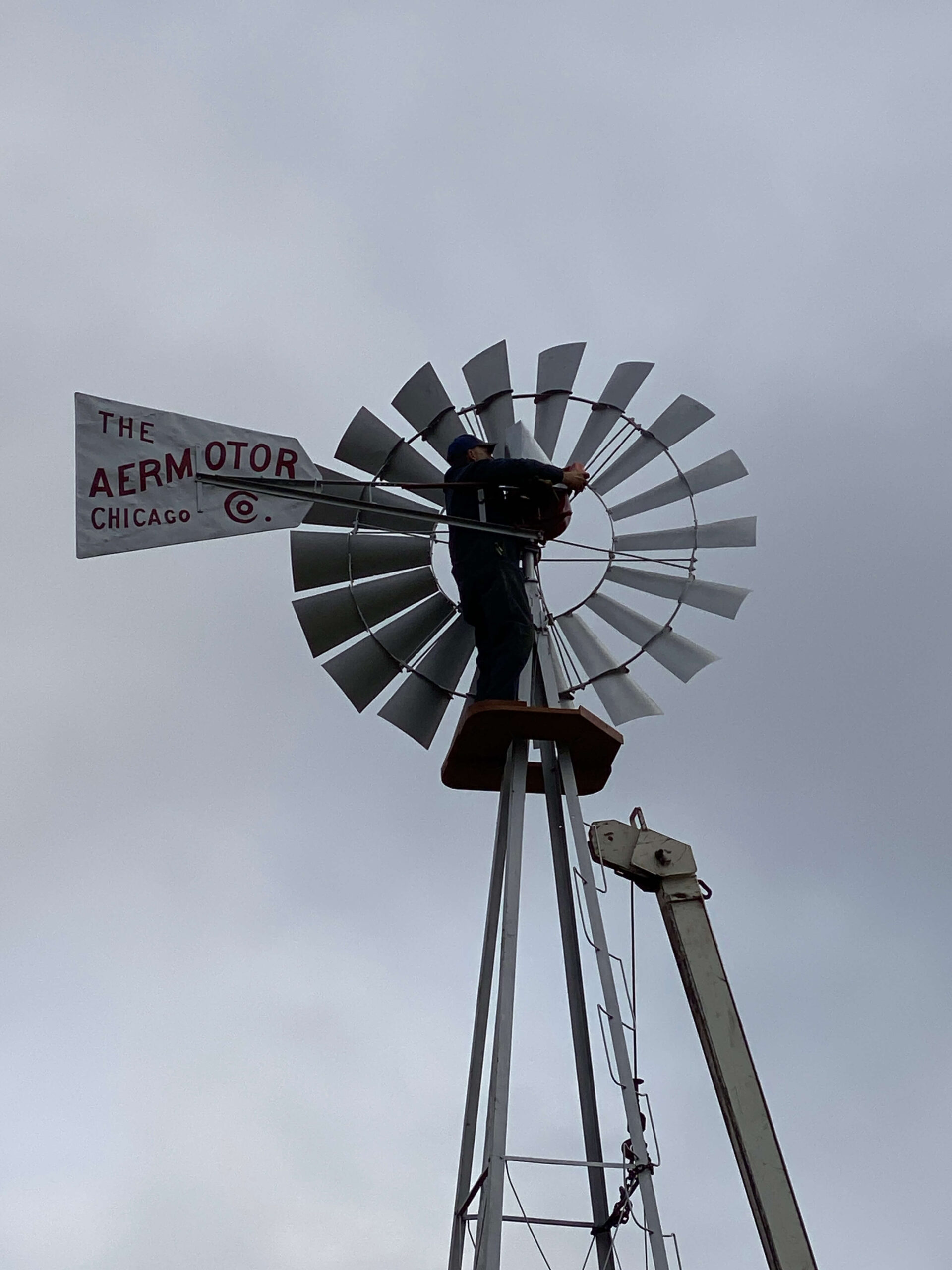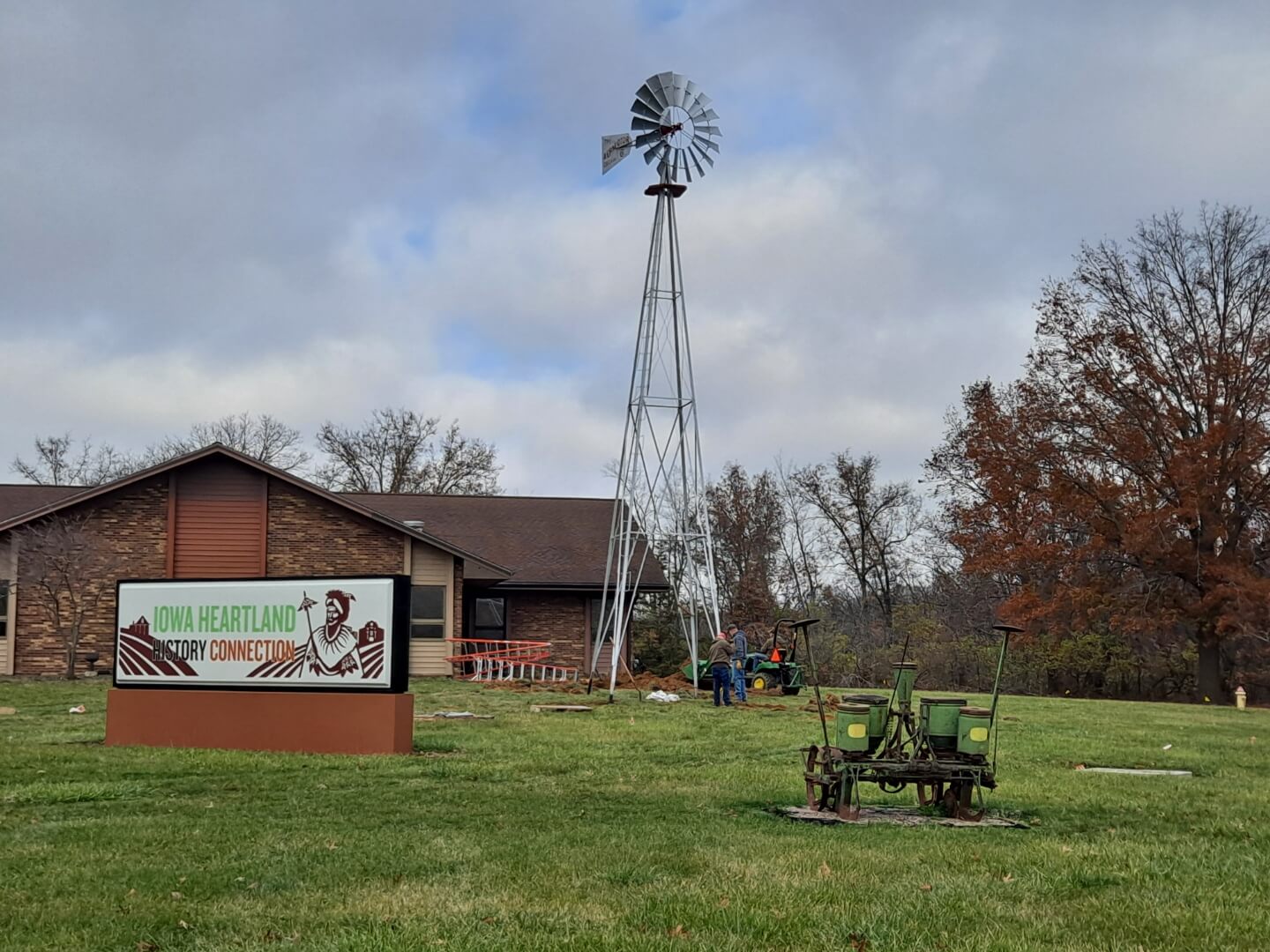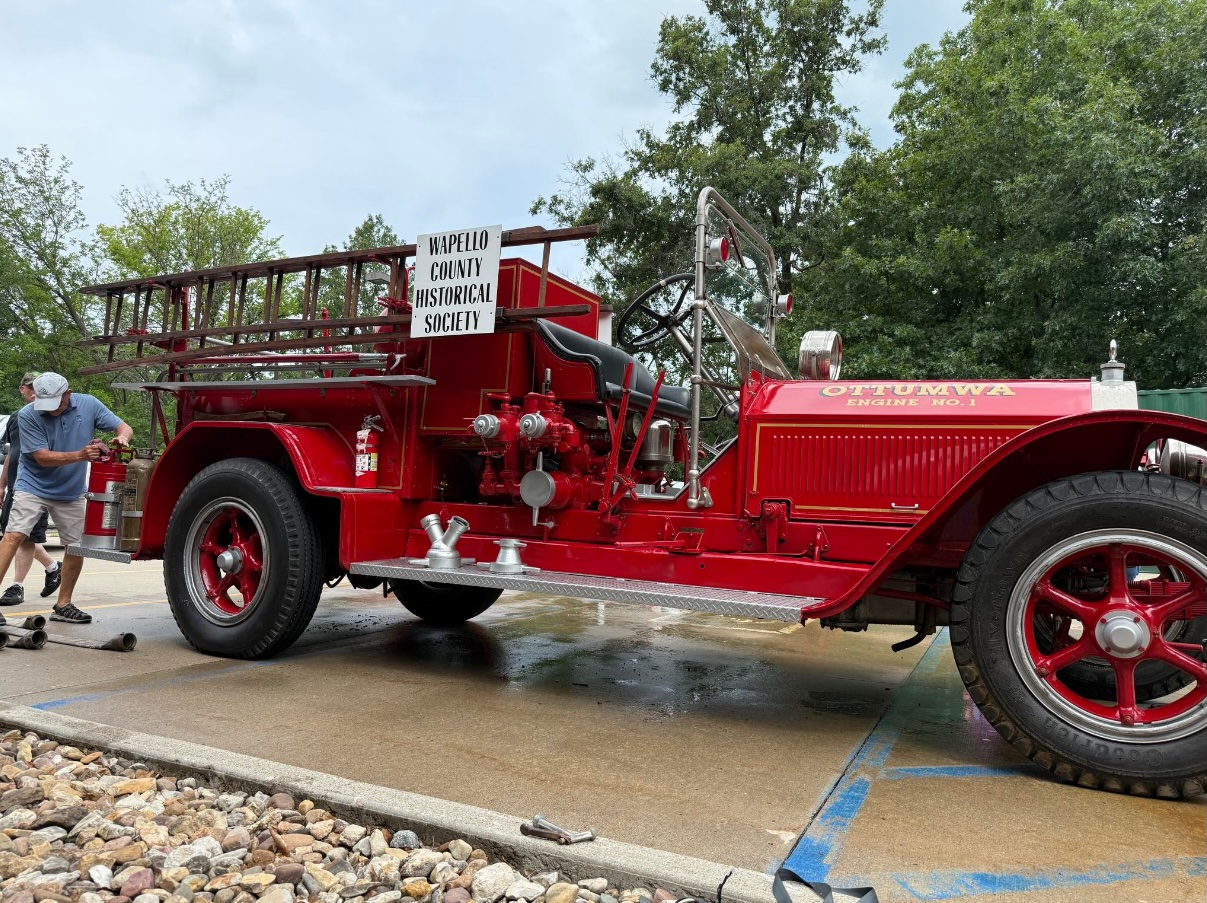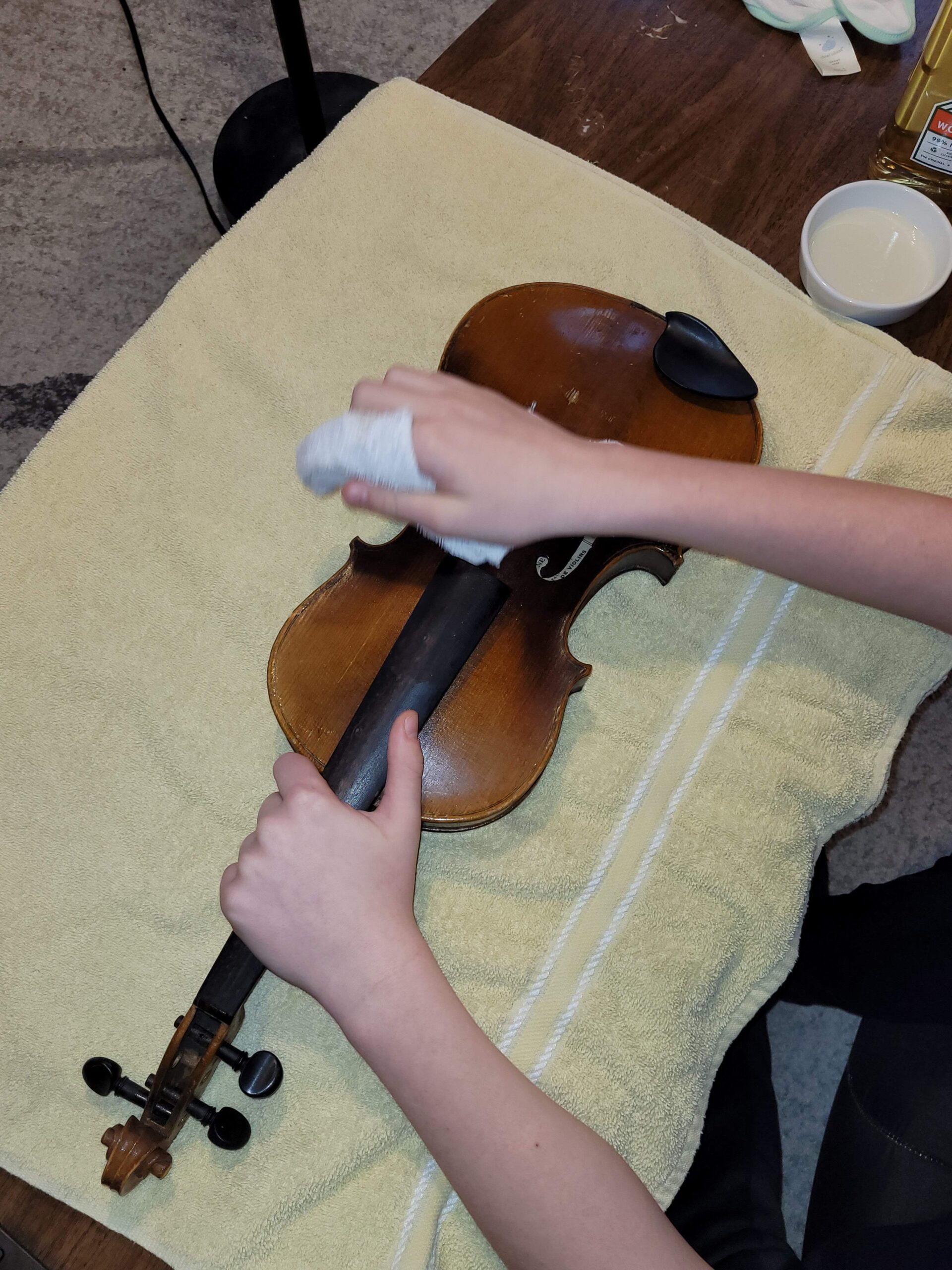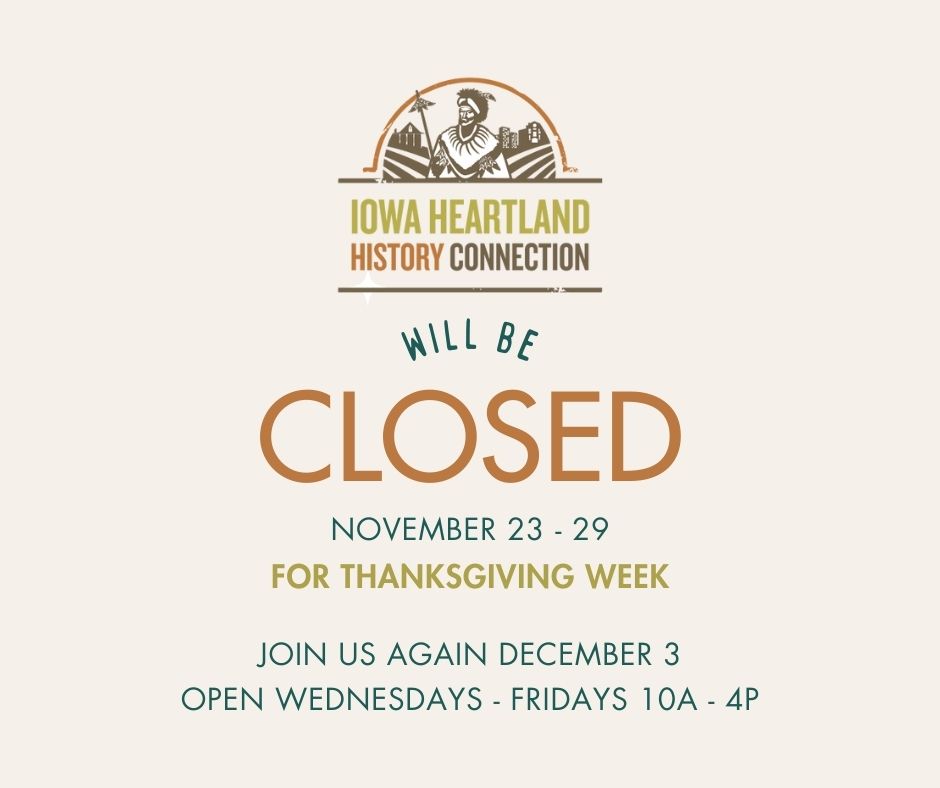At the Iowa Heartland History Connection Museum, our restored 1928 Aermotor Windmill stands as a powerful reminder of rural America’s history of resilience and invention. This iconic structure helped shape life on the plains — and now shares its story with new generations.
Windmills: Lifelines on the American Plains
In the early 1900s, windmills were absolutely essential for life and agriculture, especially across the American Midwest and West. The region’s dry, often unforgiving climate made access to water one of the greatest challenges for farmers and ranchers. Since most water lay far below the surface, windmills provided a vital solution, pumping water from deep underground wells.
These windmills powered life on farms and homesteads where access to reliable utilities were still incredibly limited — supplying water for irrigation, drinking, livestock, and even steam locomotives.
As technology advanced, companies like Aermotor revolutionized windmill design. In the 1920s, they introduced self-oiling models, drastically reducing maintenance and allowing farmers to focus on tending crops and livestock. The Aermotor windmill’s enclosed gear systems, steel towers, and reliable construction made them a fixture on the rural American landscape — and a crucial part of everyday survival.
A Piece of Ottumwa’s History: The Windmill’s Journey
The 1928 Aermotor 602 model that now stands at Iowa Heartland History Connection was originally located on a farm north of Ottumwa. It was donated and relocated to the Wapello County Historical Society and originally stood on our previous grounds at the Ottumwa Train Depot & Ballingal Park. It weathered decades of sun and storms, bent legs from being backed into by a truck, and even bullet holes in its tail.
In March 2024, the museum launched a major restoration project to preserve this important piece of local and agricultural history. The process included:
- Removing and transporting the windmill from its location at the train depot
- Complete disassembly of the windmill, all the way down to the gear box
- Repouring custom Babbitt bearings (replaceable bearing kits did not exist until Aermotor’s 702 model)
- Welding and reinforcing the metal frame (legs & braces)
- Repairing the tail and repainting the distinctive Aermotor tail logo
- Meticulously repainting the entire windmill structure, from braces to blades
By November 2024, this restoration and installation on our grounds at 1 Museum Drive was complete.
A Community-Powered Restoration
This was no small task, and it came together thanks to a team of dedicated community members:
- Chris Cobler led the project, handling everything from coordinating transportation, disassembly, cleaning and welding, to reassembly and final installation. Chris estimates 80+ hours of labor for this incredible project.
- Jeff Poortinga of D&D Pump in Pella provided expert technical support, especially in the restoration of the motor and repouring the bearings, as well as being instrumental in reinstallation.
- DJ Cobler of Iowa Storage Containers assisted with the removal and transportation of the windmill from the original site, as well as transporting the restored windmill to our new location
- Museum board members and volunteers gathered to repaint every surface of the windmill, restoring its original look and protecting it for future generations.
See It for Yourself
Today, the 1928 Aermotor Windmill stands proudly on our museum grounds — a tribute to the resourcefulness of Iowa’s early farmers and the lasting importance of preserving these historic tools.
We invite you to visit the Iowa Heartland History Connection Museum to see this beautifully restored windmill for yourself. Discover the tools, stories, and spirit that shaped our past and celebrate the people who continue to keep that history alive.
